Air New Zealand is not the world’s largest airline nor is it the world’s most influential airline. However, as a carrier that operates a huge proportion of long-haul flights alongside a domestic network, it often has to be creative. This is why it has carved out an innovative niche among its peers.
The need for this creativity is driven by geography. Flights to New Zealand can be intimidatingly long for passengers, especially for the vast majority who travel in coach.
To try and make long flights more appealing, Air New Zealand has developed a few distinctive onboard products. Additionally, the airline has a dedicated high-performing team that designs these products at a unique studio.
Earlier this fall, following the airline’s inaugural flight to Auckland from New York’s John F. Kennedy International Airport (JFK), I had the opportunity to tour “Hangar 22,” the airline’s innovations lab.
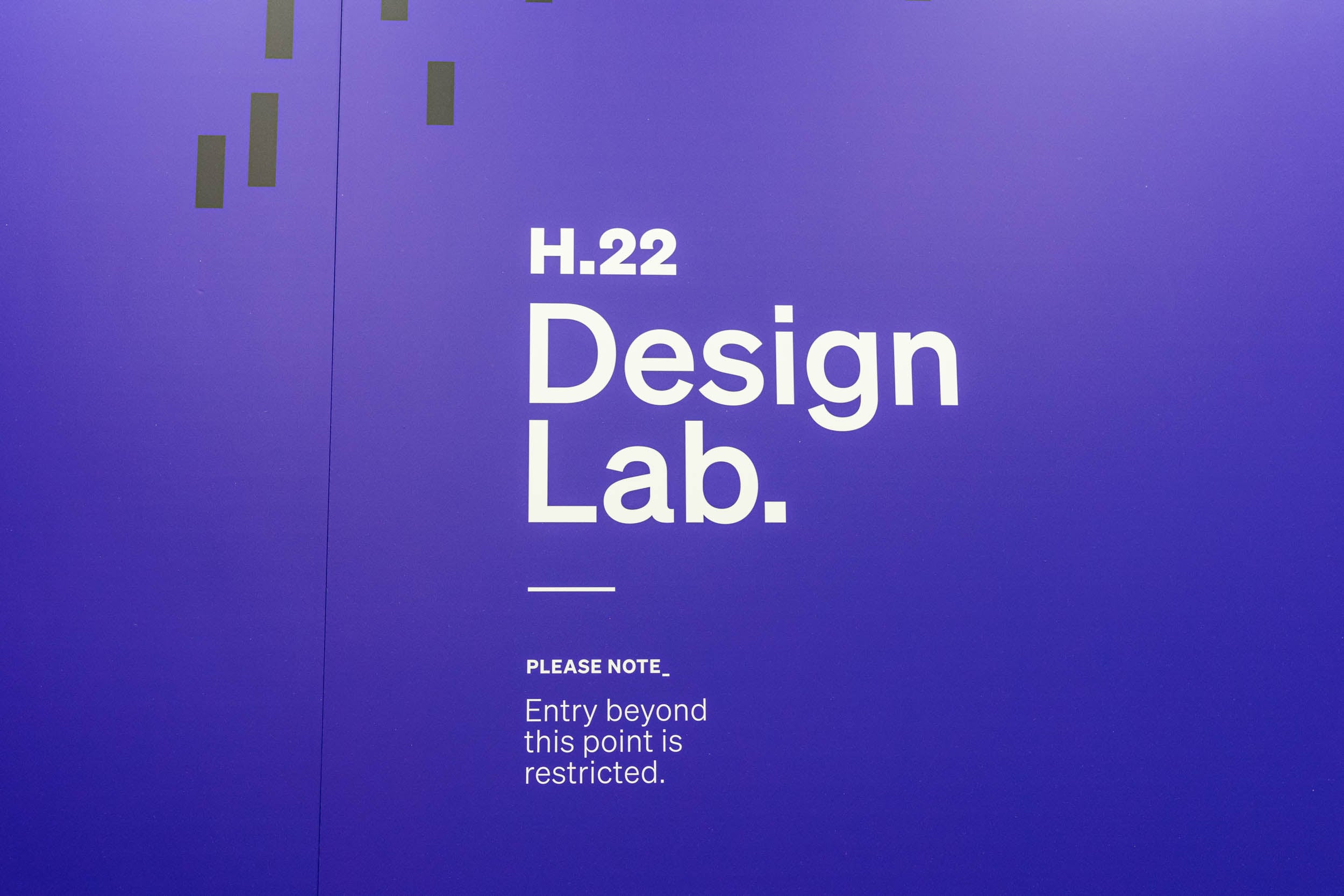
Despite its name, Hangar 22 isn’t really inside a hangar. Nestled away in an unassuming office building off a side street in downtown Auckland, a few blocks from the central business district, the lab sits behind locked doors and typically has strict protocols for visitors (the large “no photos” sign on the wall is telling).
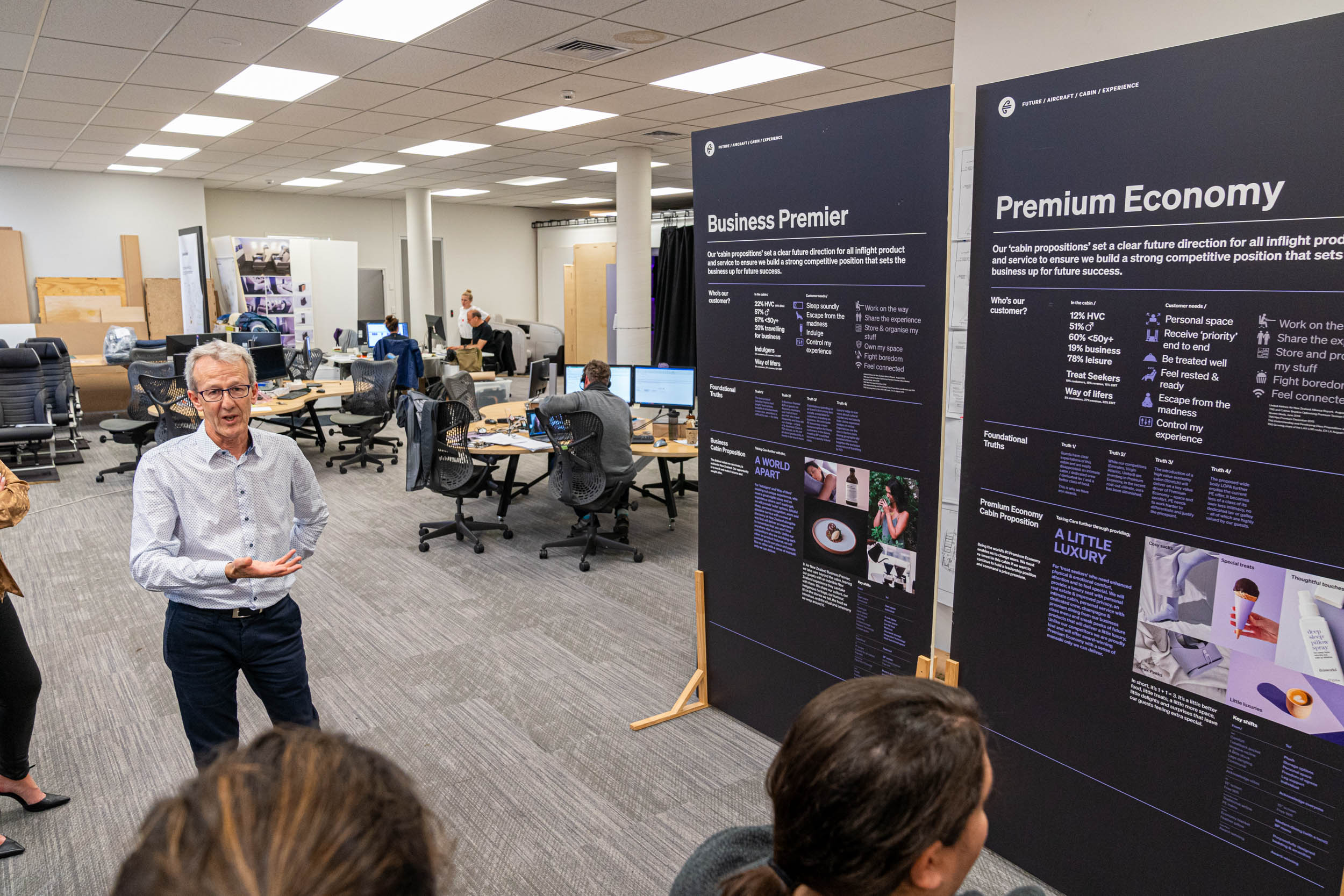
Once you’re inside, though, it’s a casual, open-plan office with standard amenities and an excellent coffee machine (one that makes barista-quality flat whites, as I found out).
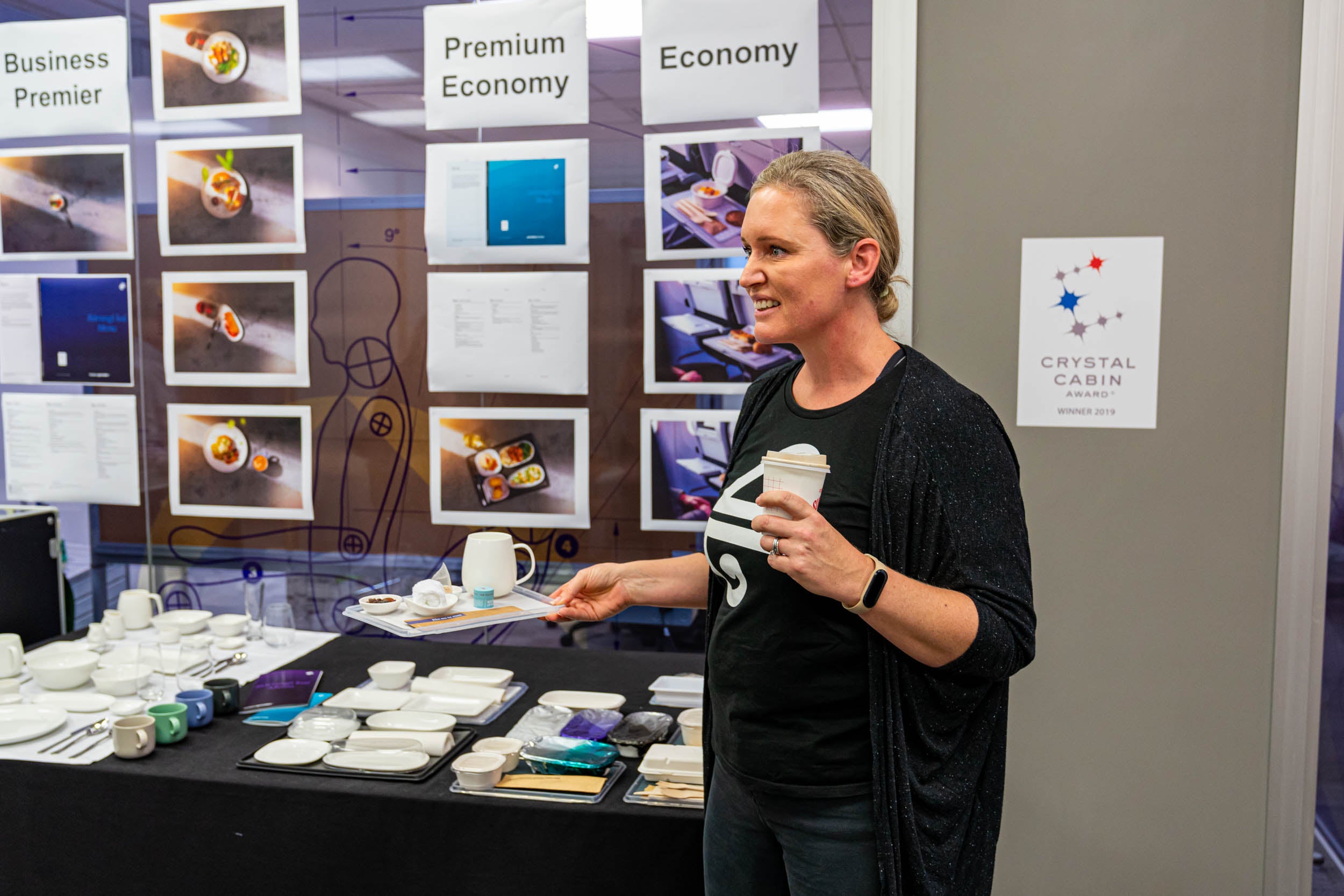
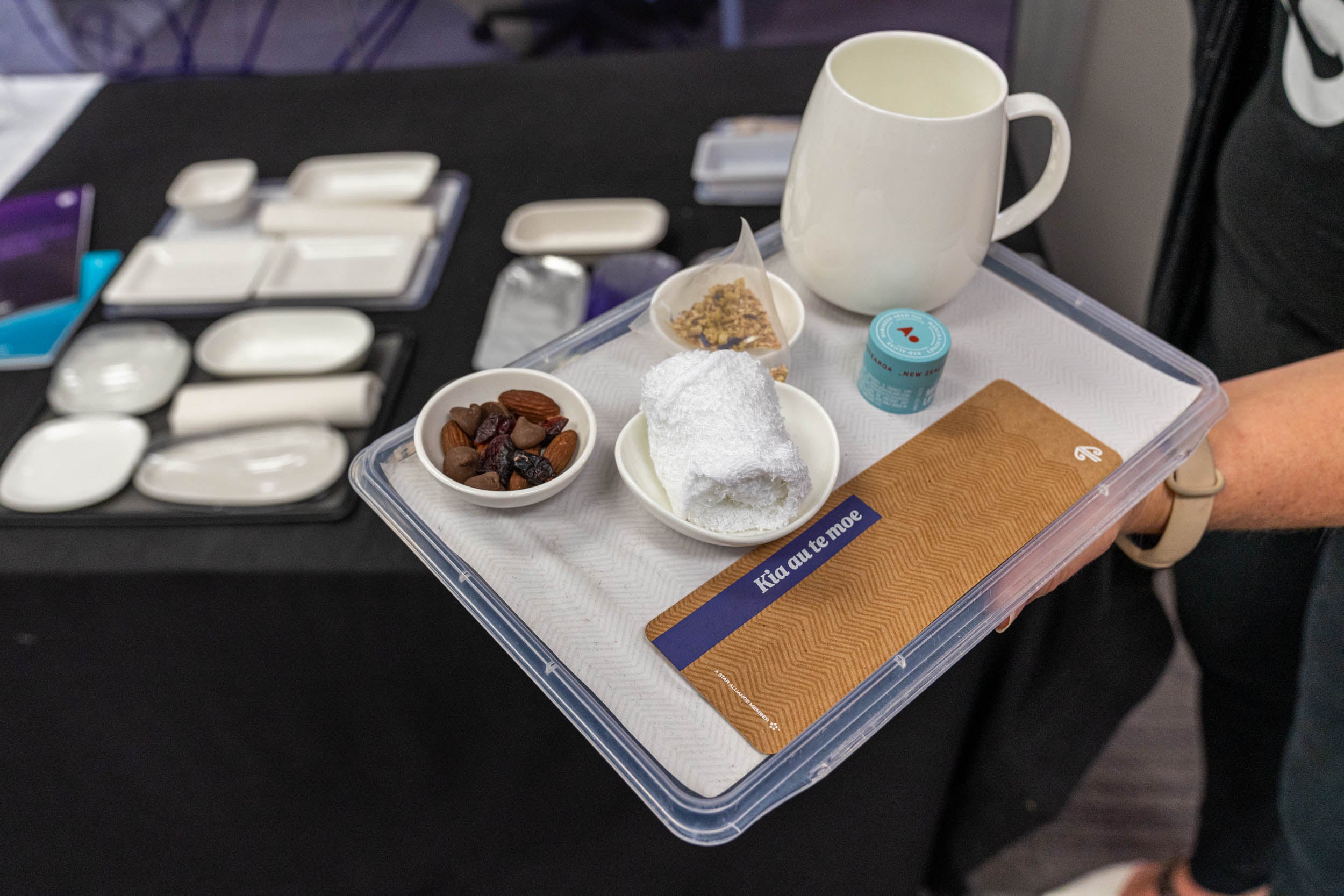
At Hangar 22, the airline designs everything from its new meal services — such as the menu items and types of plates and utensils — to its new business-class seats to totally unique, sleep-friendly hard products for its economy cabin.
The airline famously offers a “Skycouch” in coach, which allows passengers to buy an entire row of coach seats and raise a leg rest-type device to turn them into a couch that’s perfect for napping or relaxing. Those seats cost extra, but they are still significantly less than a lie-flat business class seat would cost.
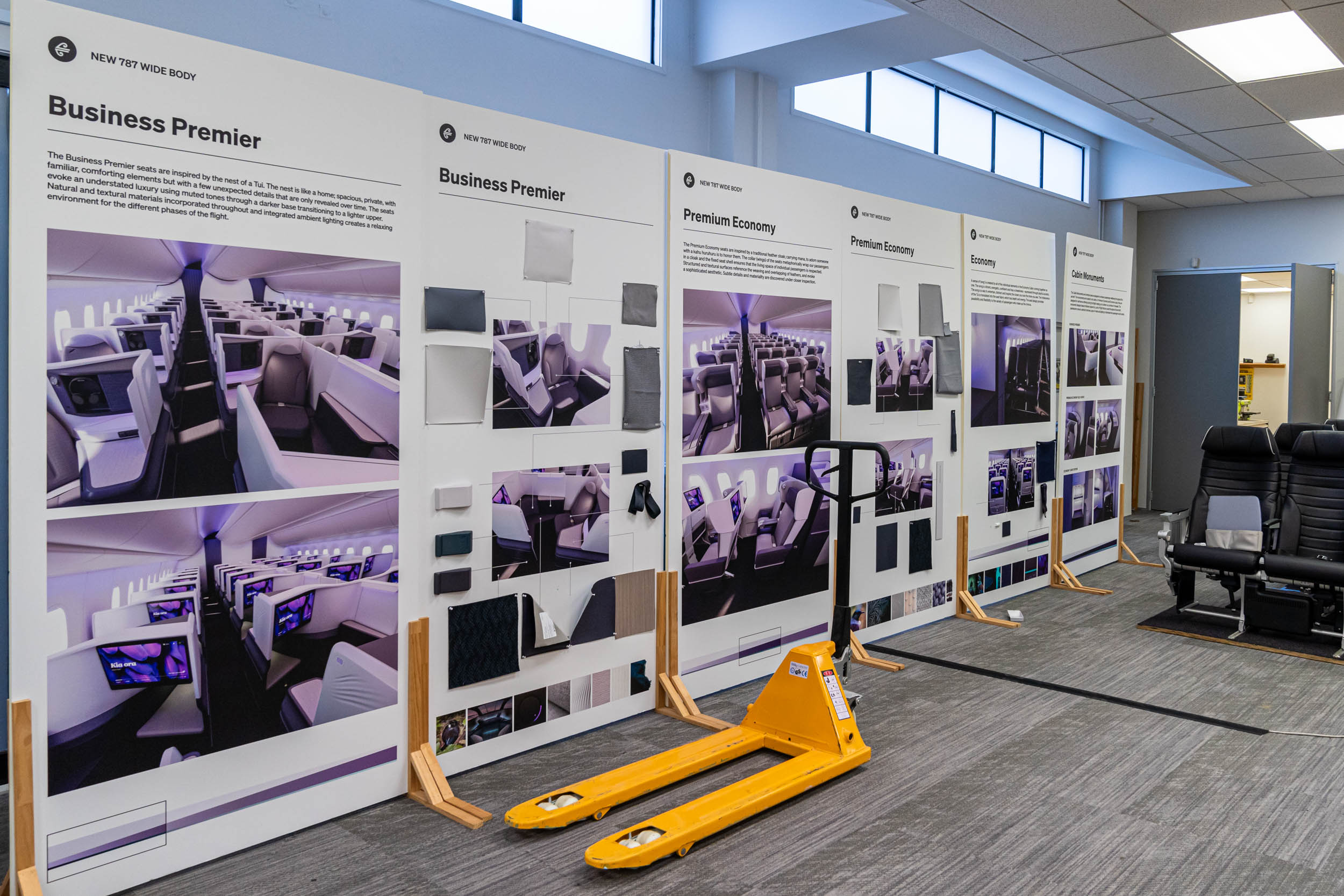
The Skycouch may sound obvious, but it’s a fairly difficult idea to implement and one that has to take safety, economic, and fuel efficiency factors into consideration.
Air New Zealand’s next economy product will be even more challenging to pull off — and even more innovative.
The airline unveiled designs for its “Skynest” — a six-bed compartment that can be placed at the back of the coach cabin — in early 2020. It will be small and tight, but it would allow for six passengers at a time to get a few hours of shut-eye. Once certified and installed, the plan is to offer it in four-hour chunks to six passengers at a time, for an additional fee.
While the airline first announced the plans for the Skynest two years ago, it wasn’t until this year that the airline had a working prototype of the capsule.
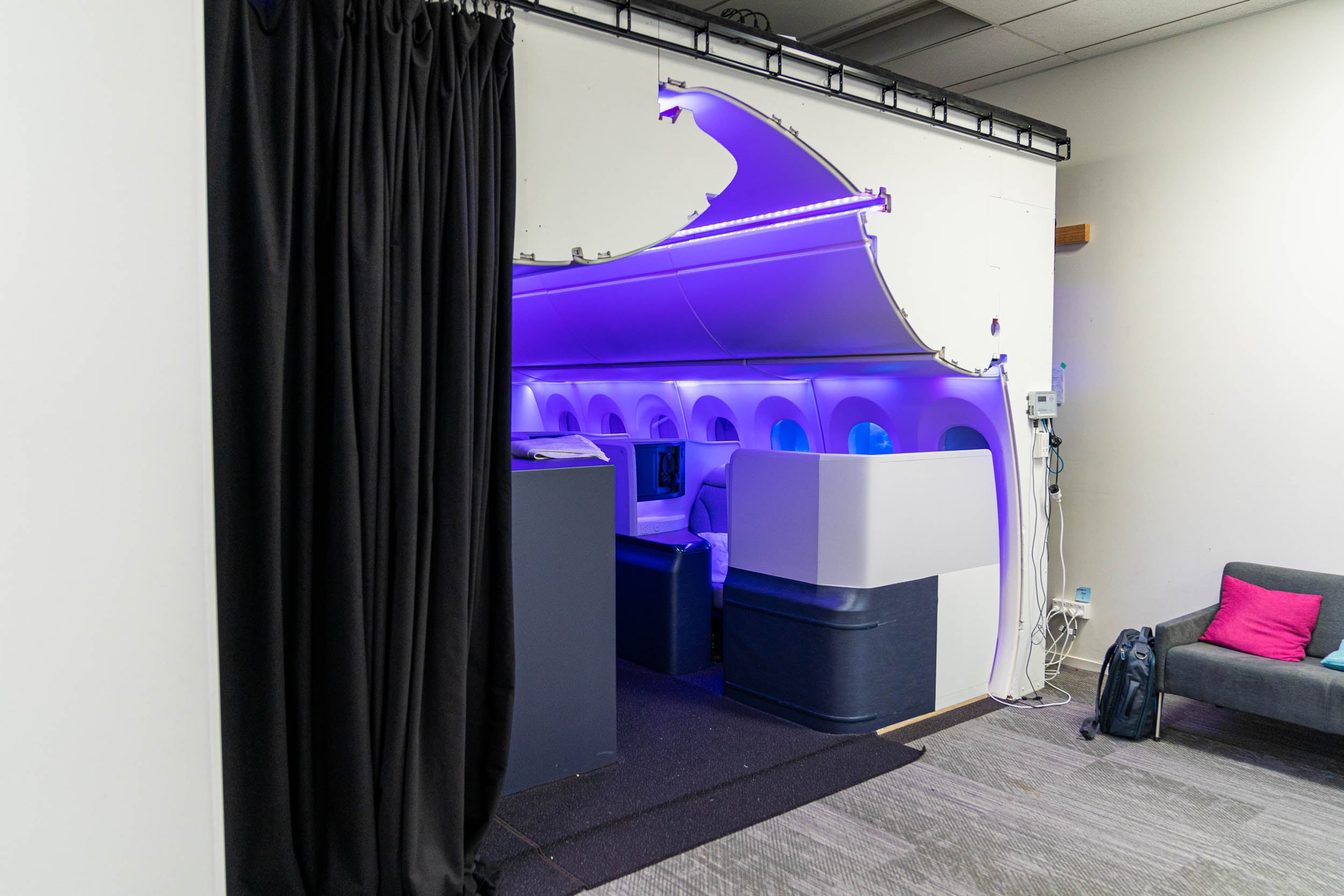
Tucked into the back corner of Hangar 22, there’s a small, subdivided room made from plywood, sheetrock and black curtains.
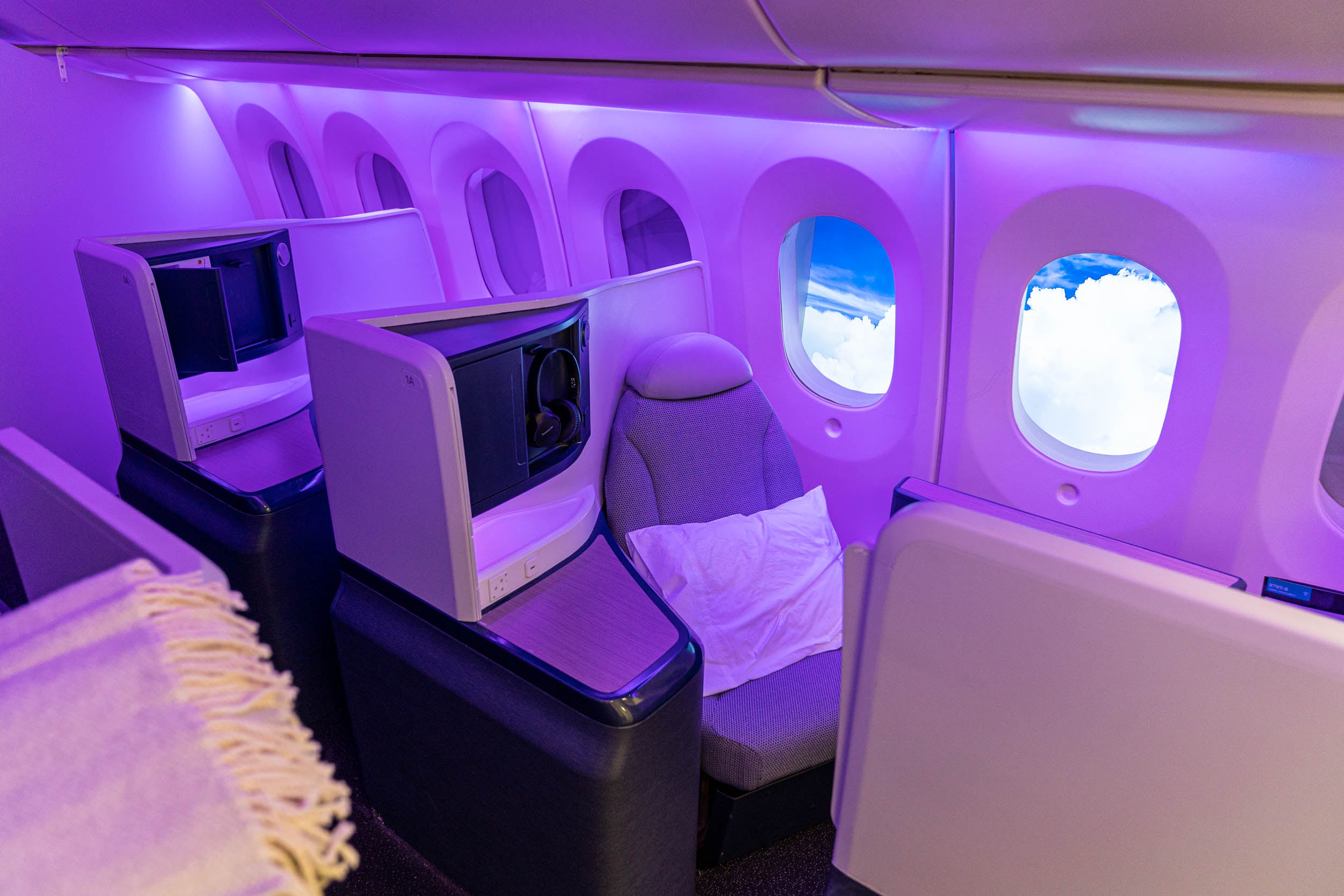
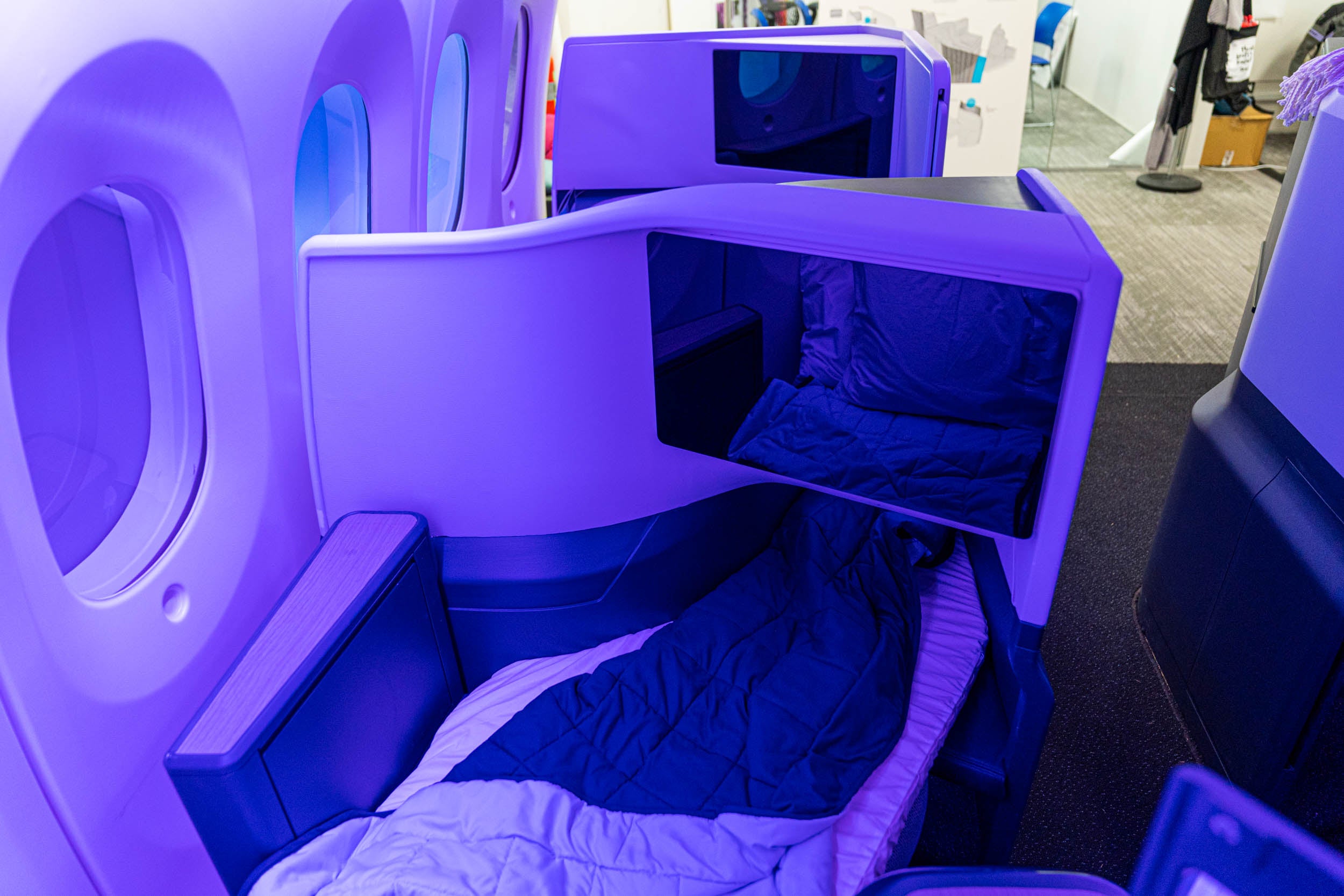
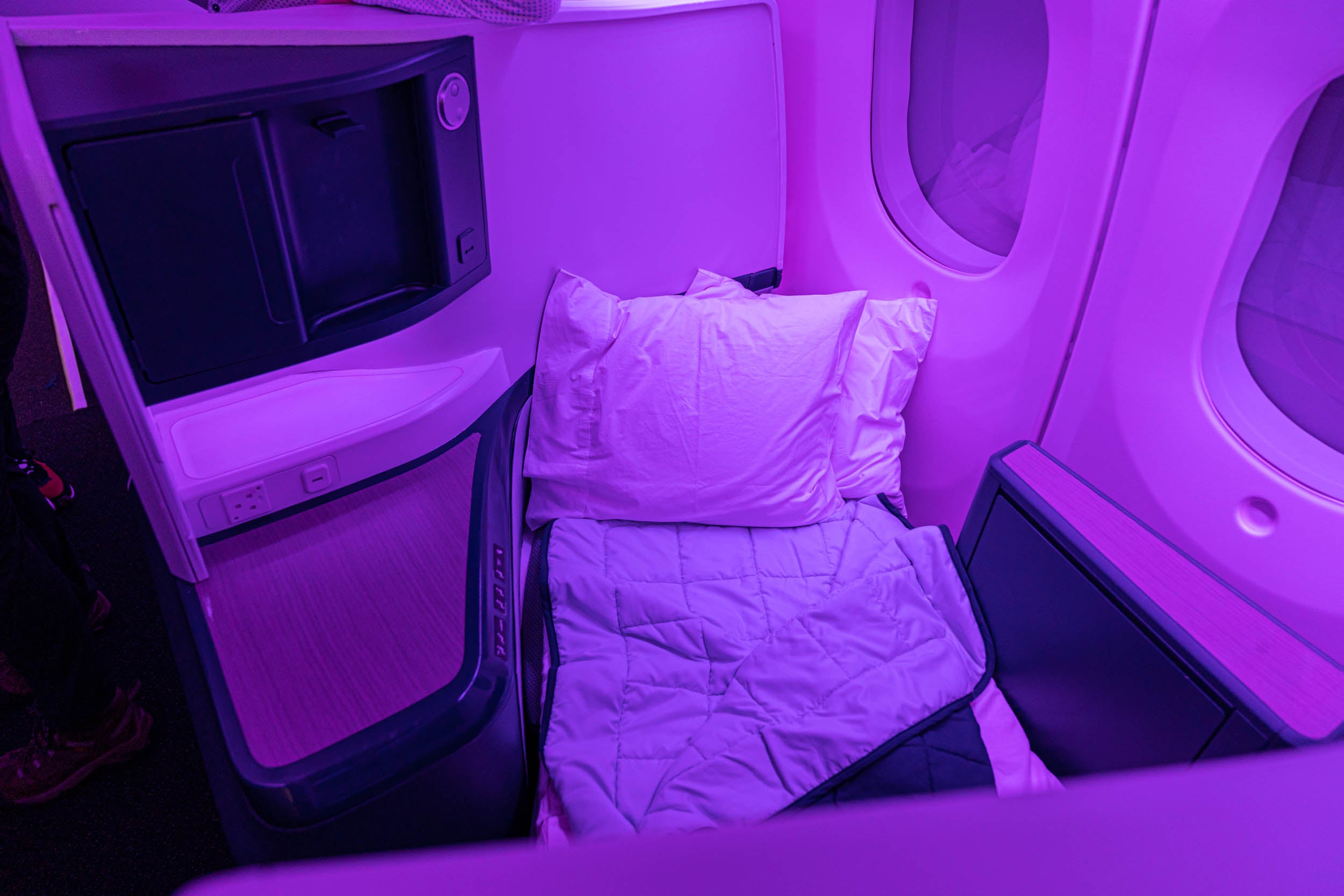
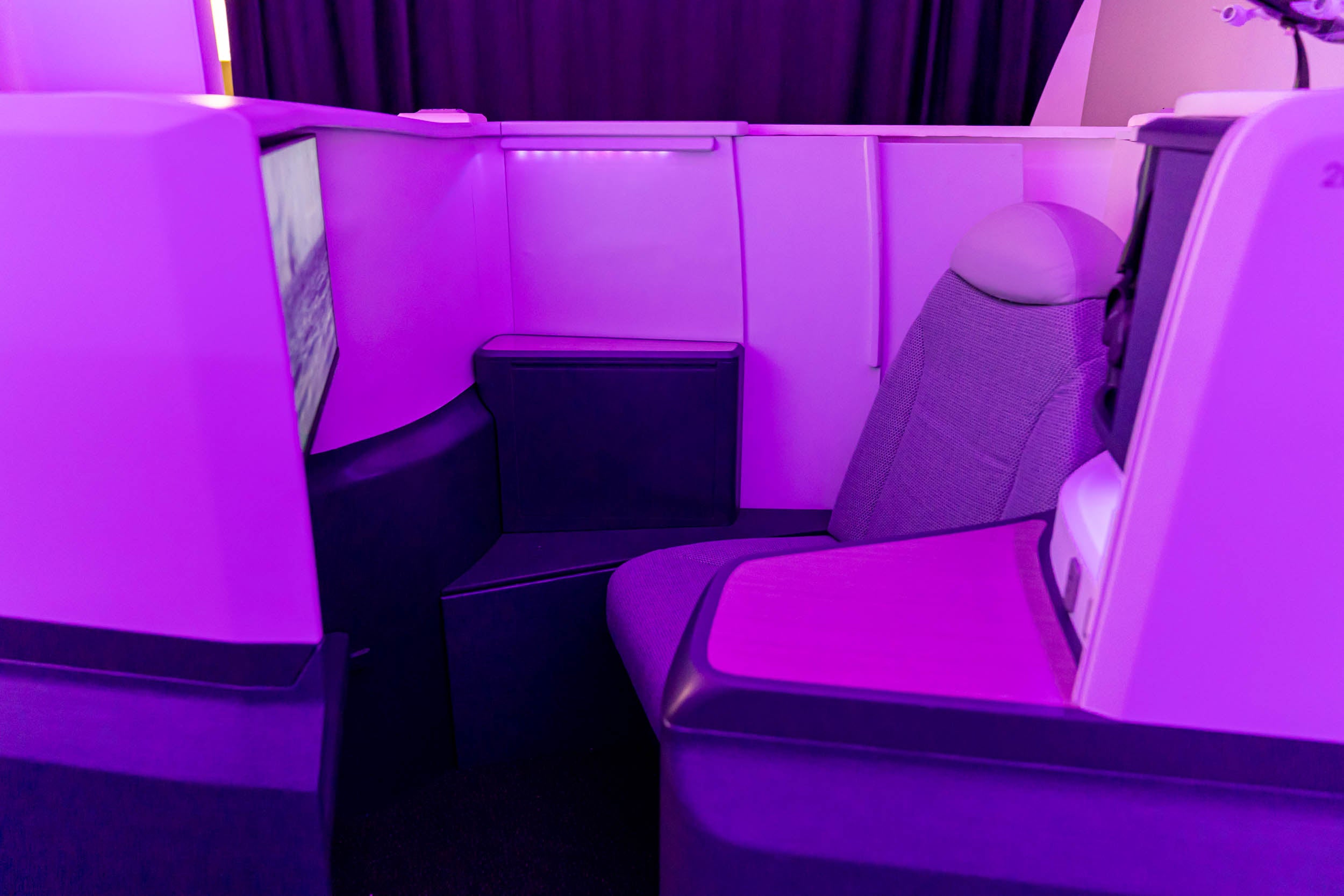
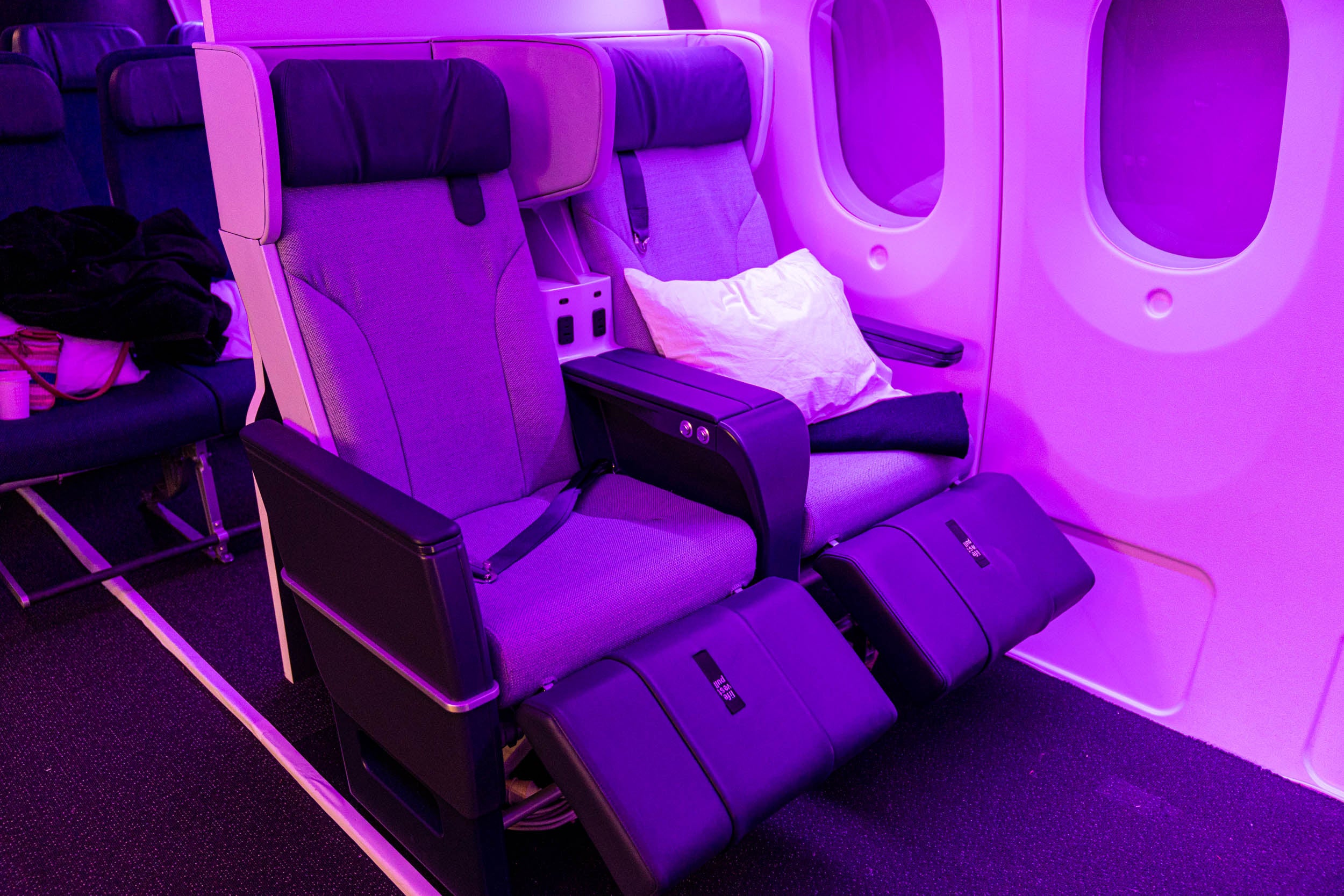
Inside that room, you’ll find the first mockup of the new Air Zealand cabin, featuring scale replicas of its new business-class seats, along with a premium economy and coach cabin.
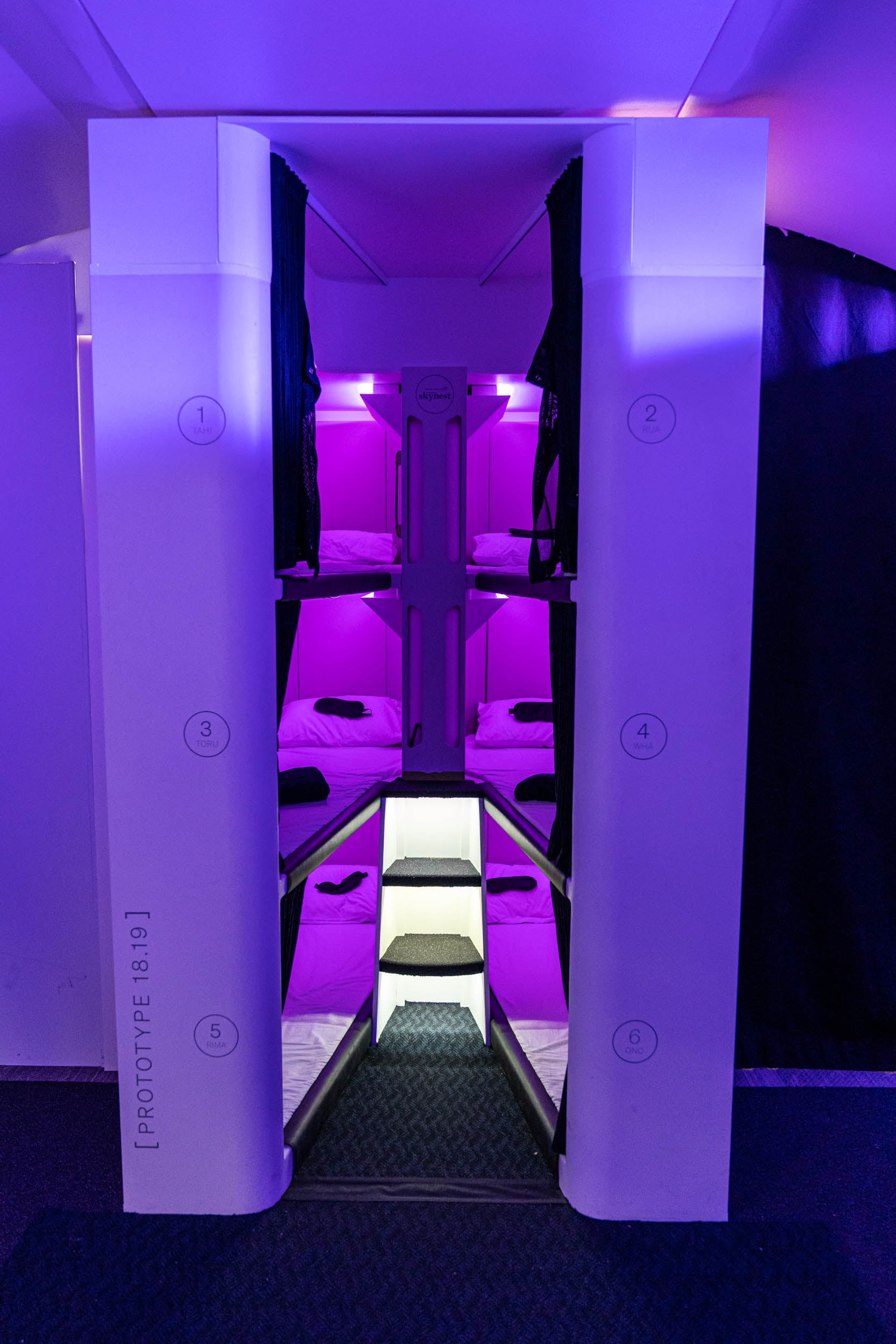
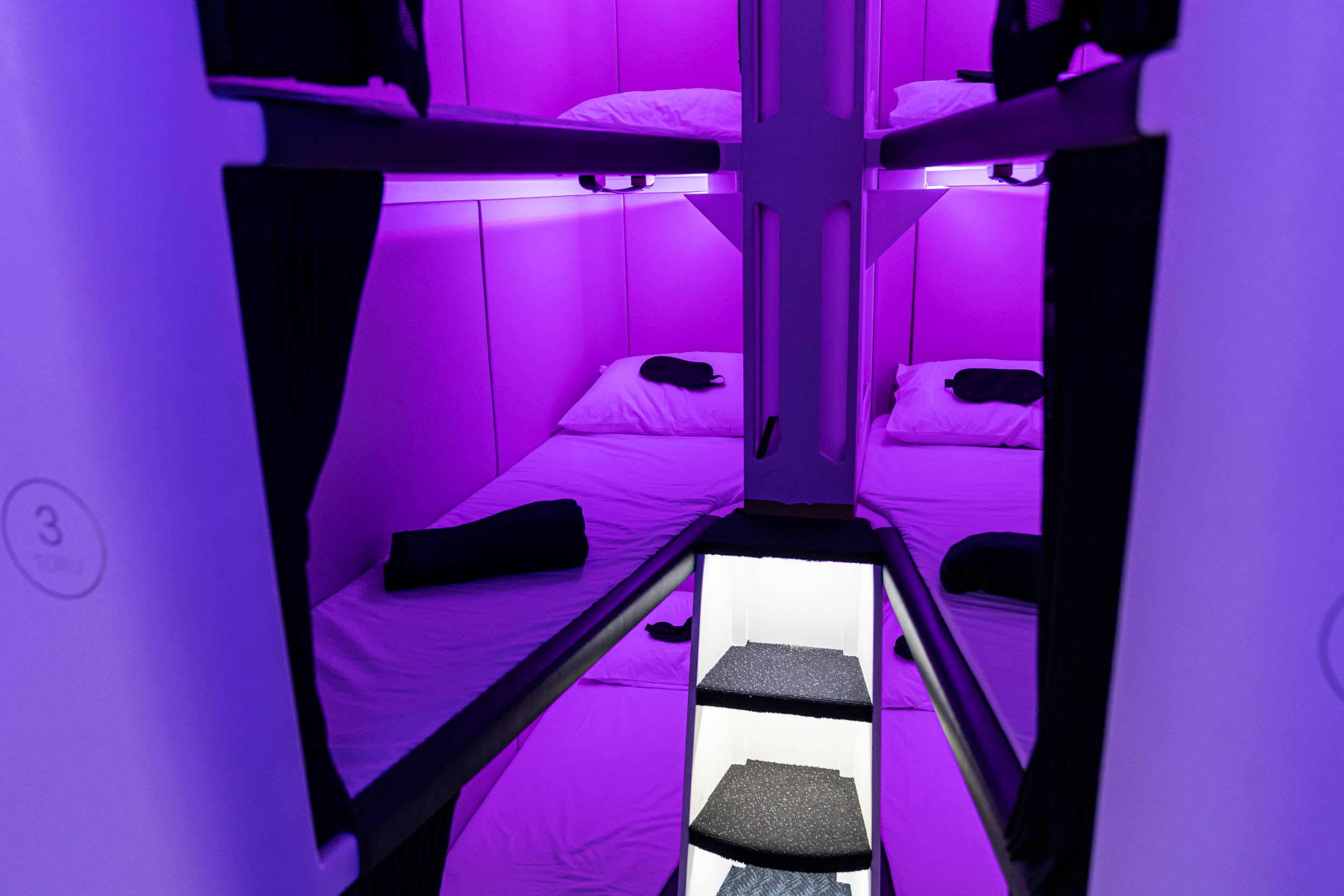
At the very back of the “cabin,” next to the coach seats, sits the prototype Skynest.
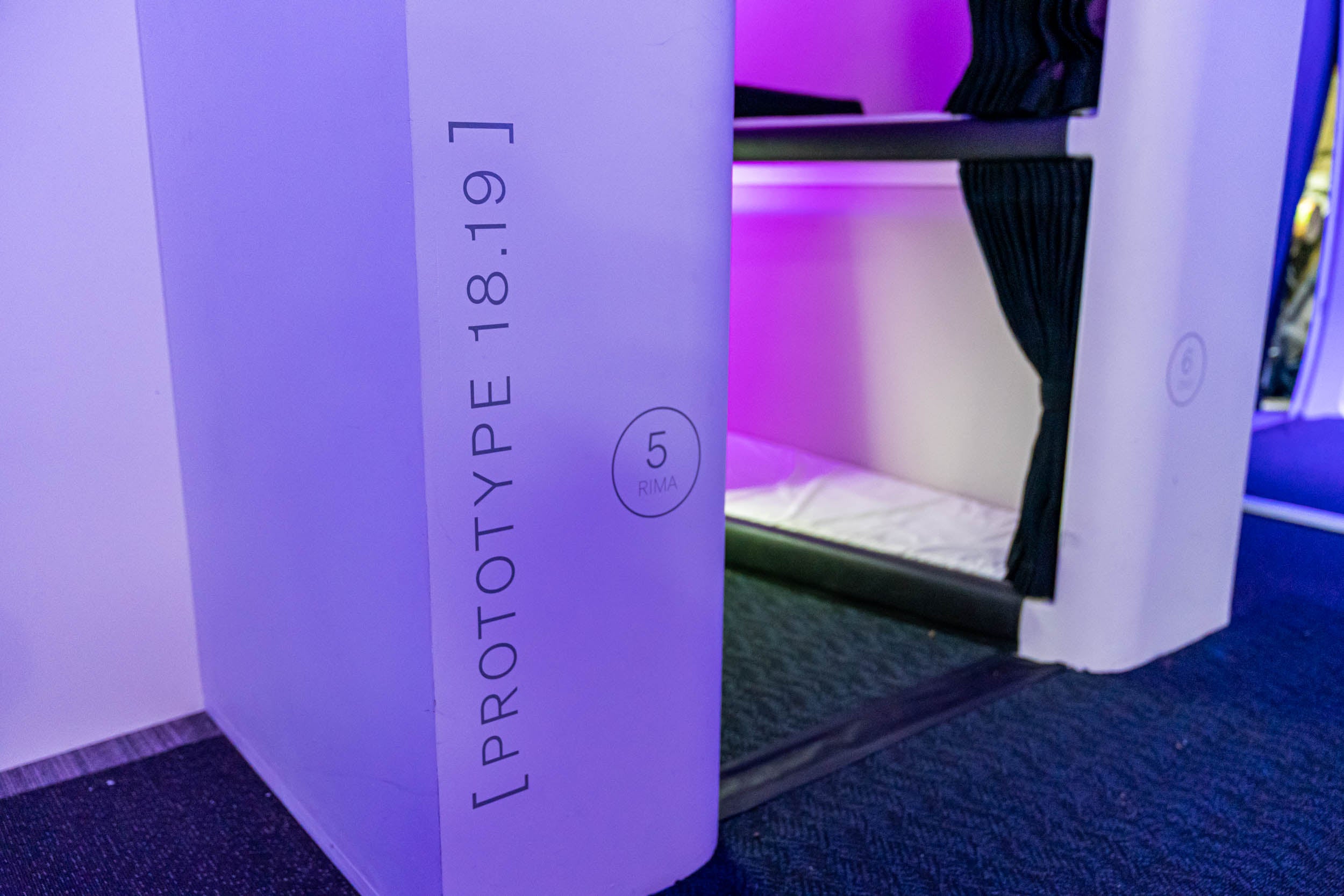
For someone like me who can’t fall asleep while sitting up, the value proposition here is immense. It also makes New Zealand a more viable destination. Otherwise, my options are to pay for business class (which I likely couldn’t afford or find the award availability for) or stay awake for about 30 hours and hope I can take an early-afternoon nap on the other side.
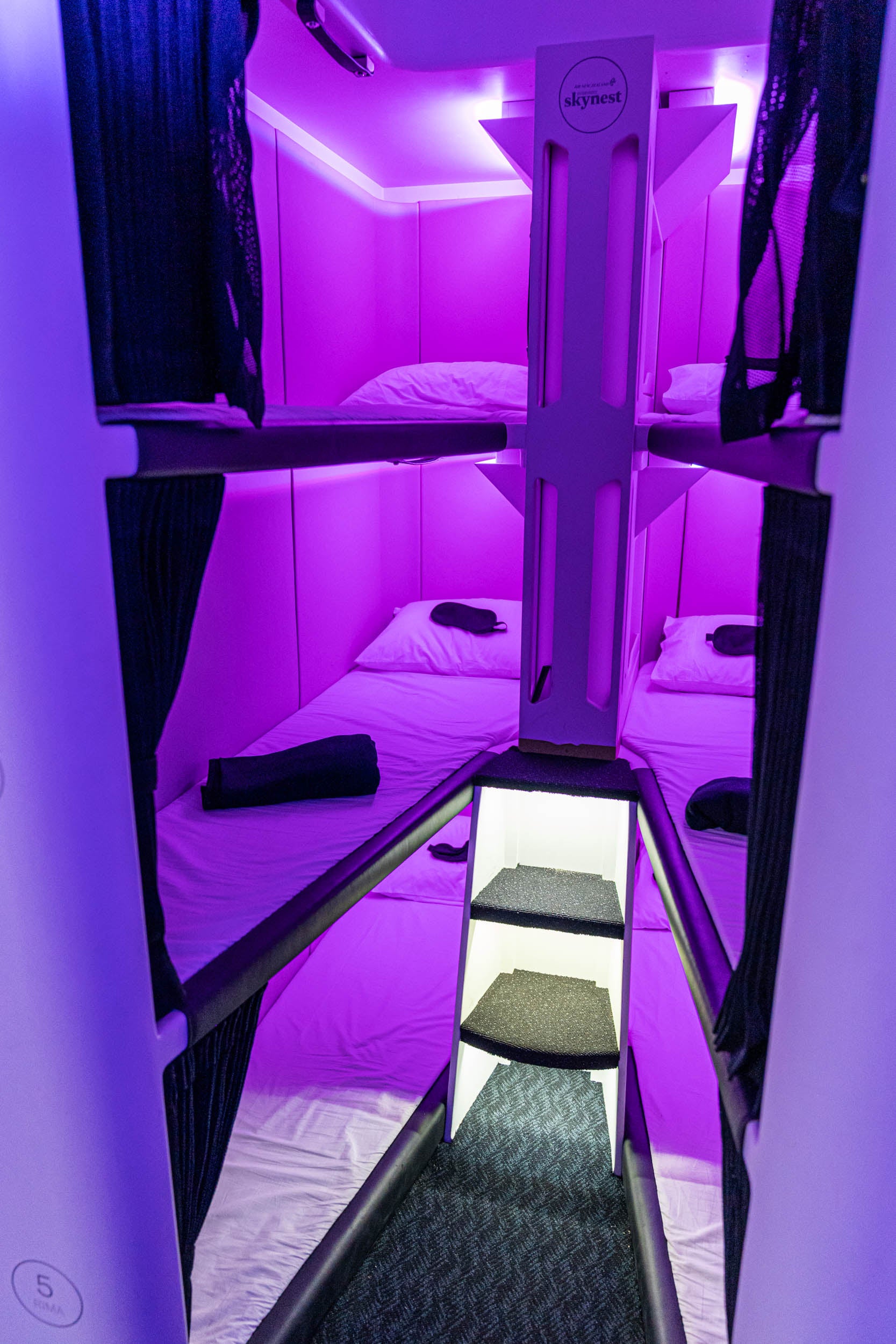
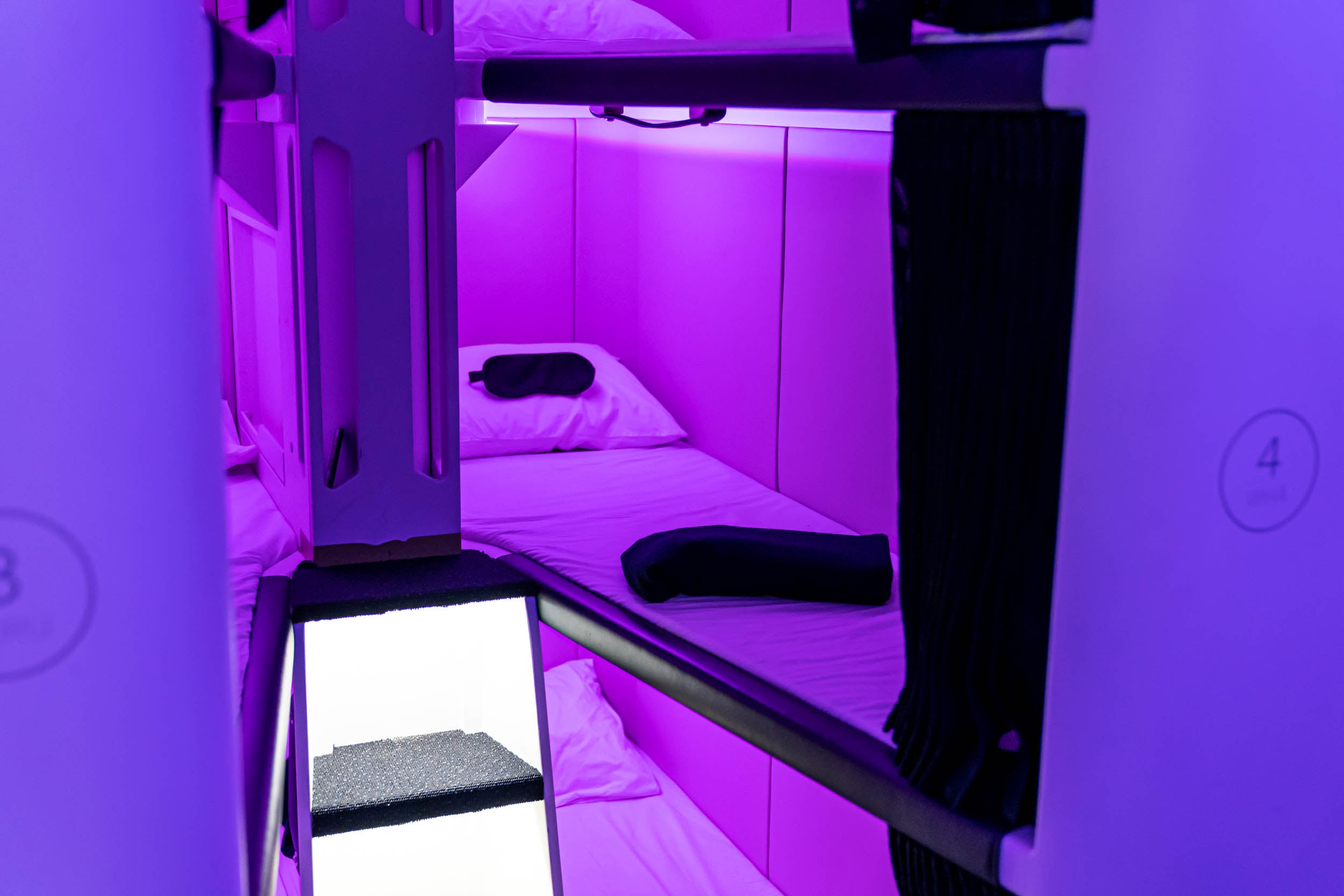
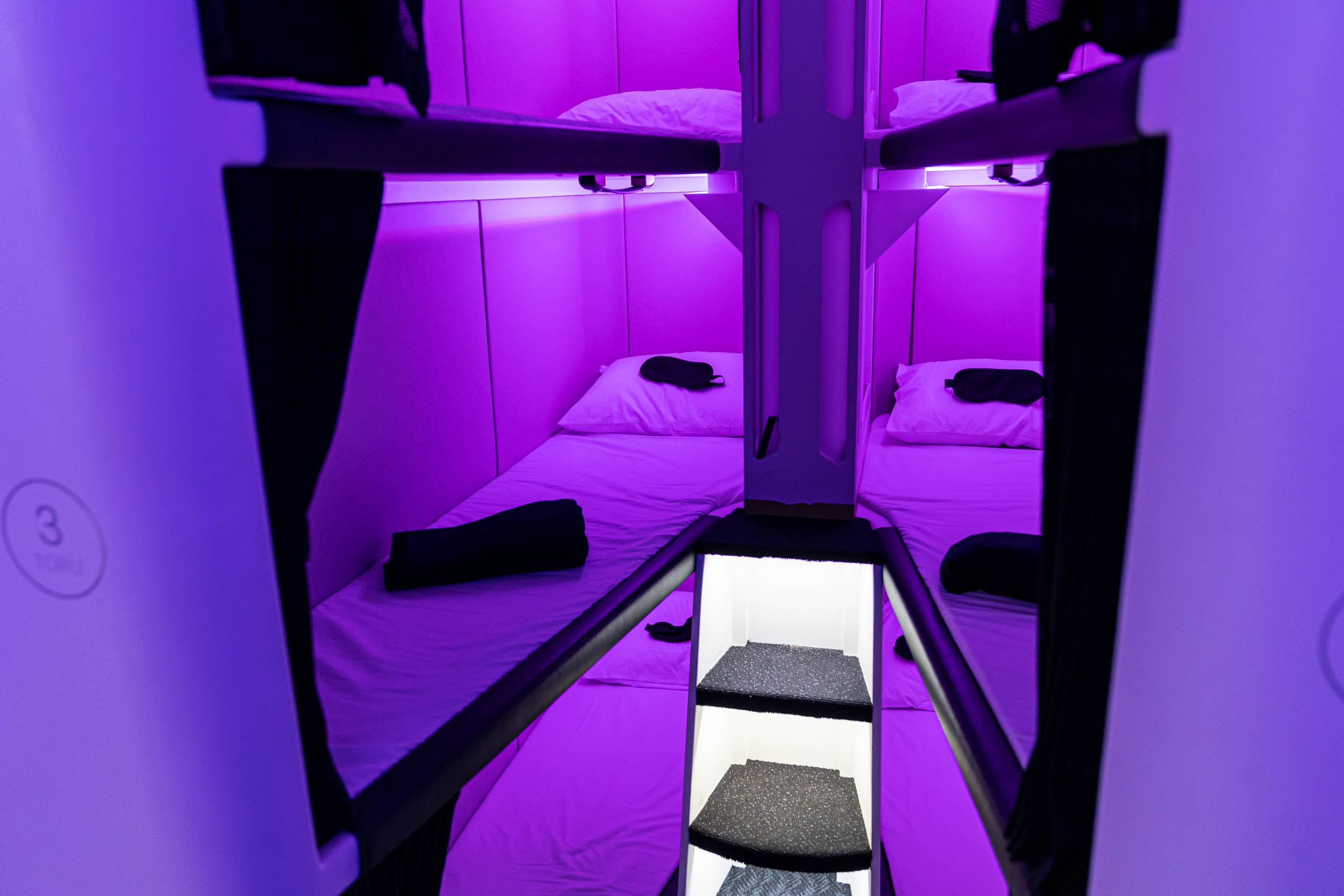
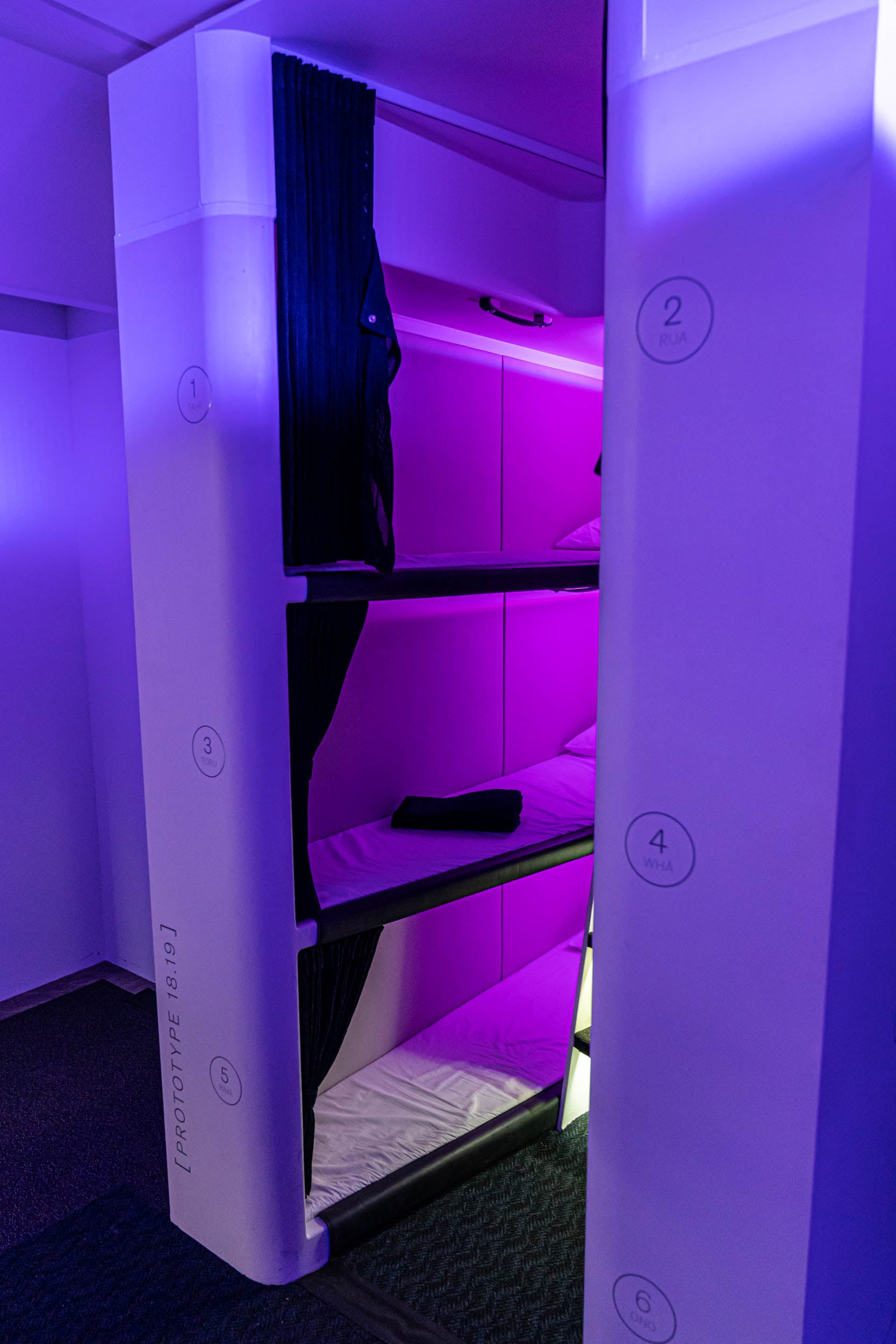
It will likely be some time before the Skynest is available to fly. In the meantime, there’s the mock-up in Hangar 22.
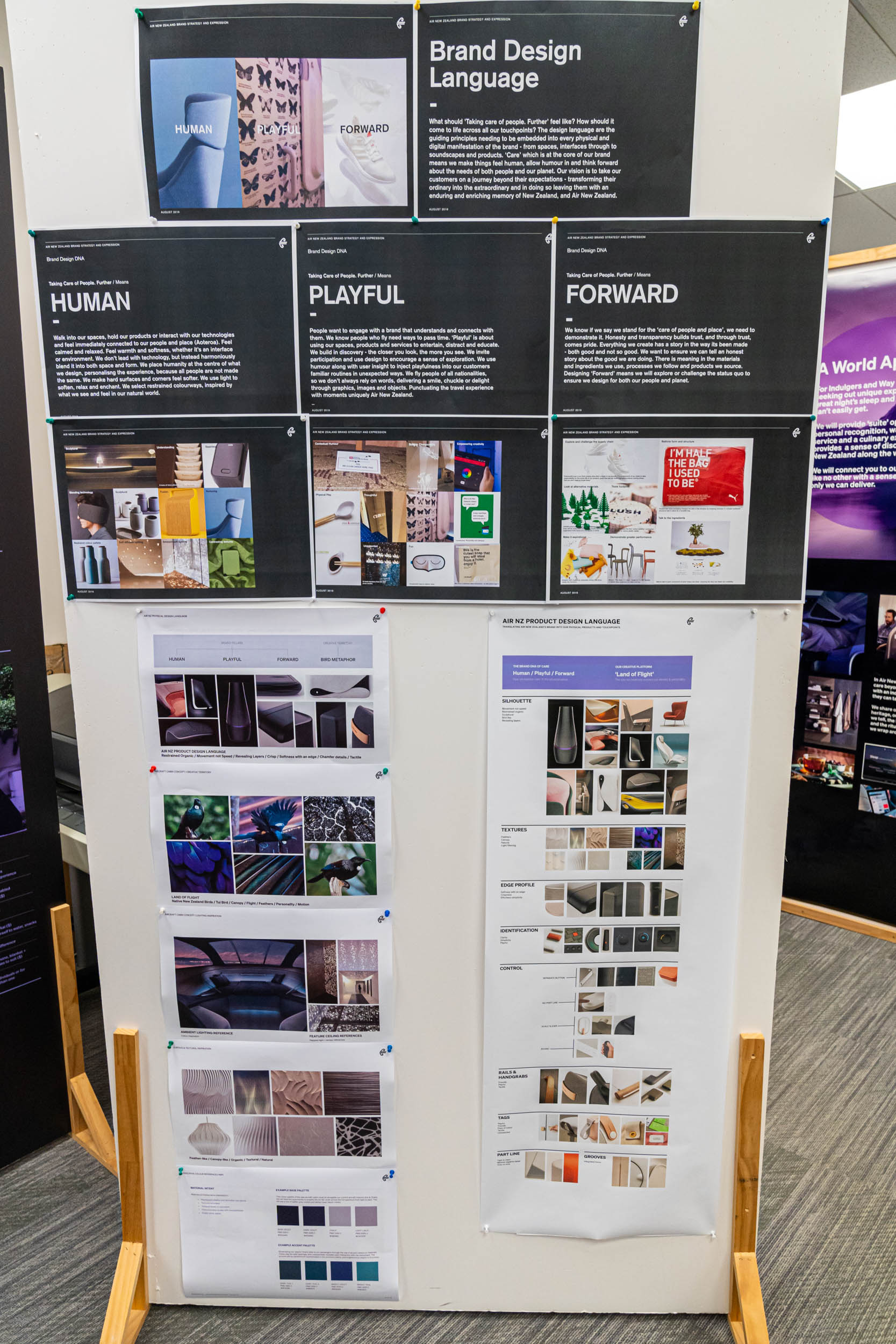
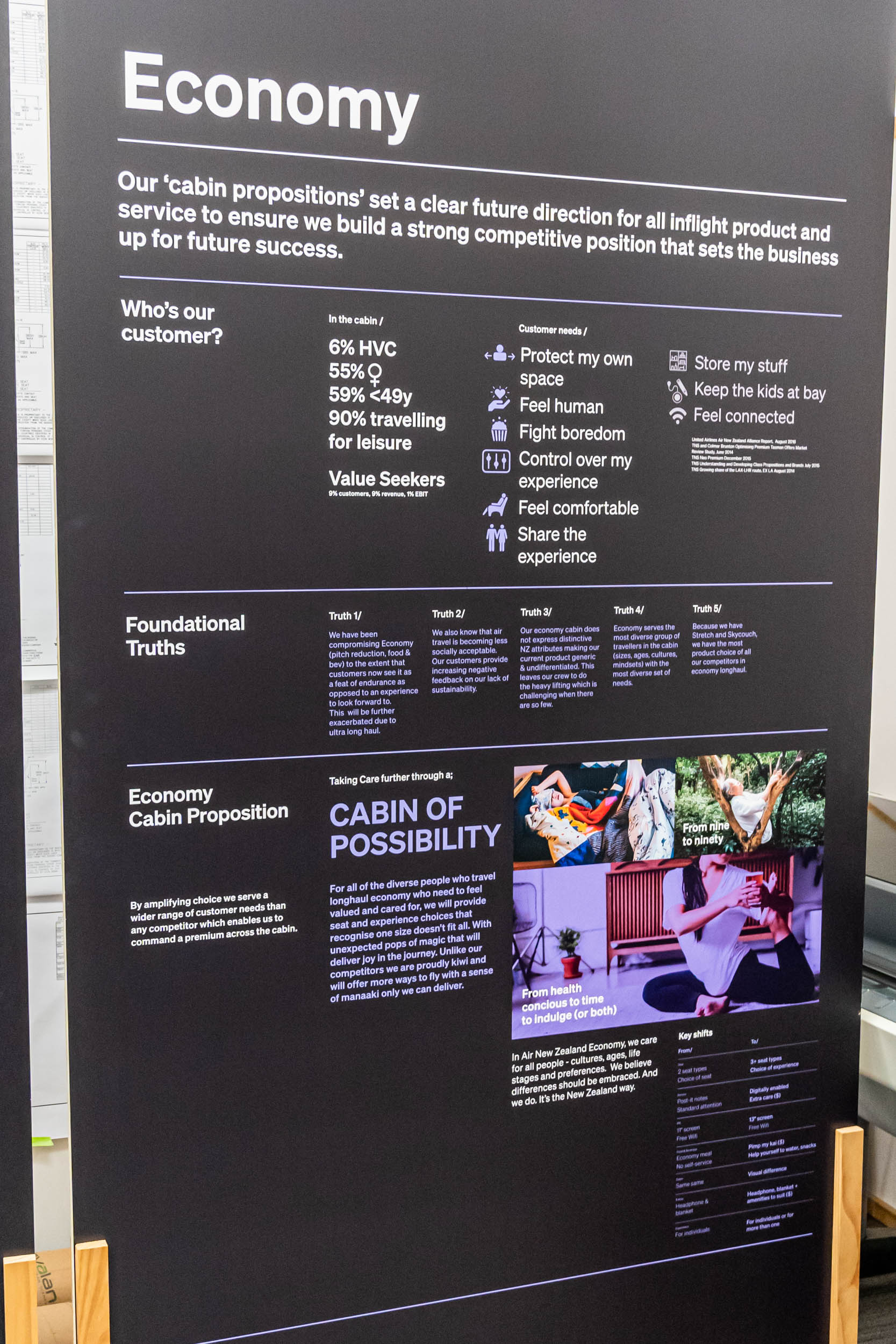
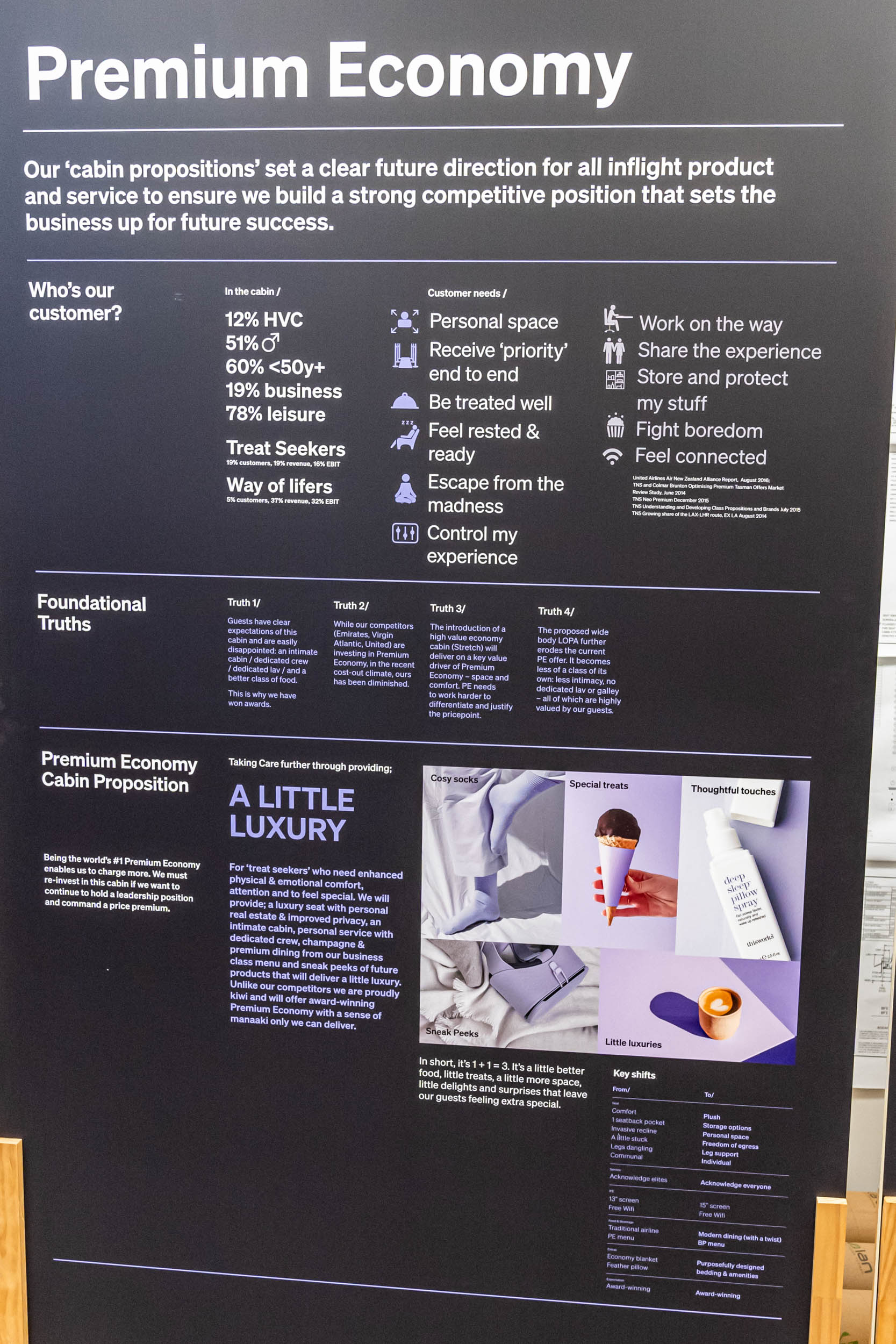
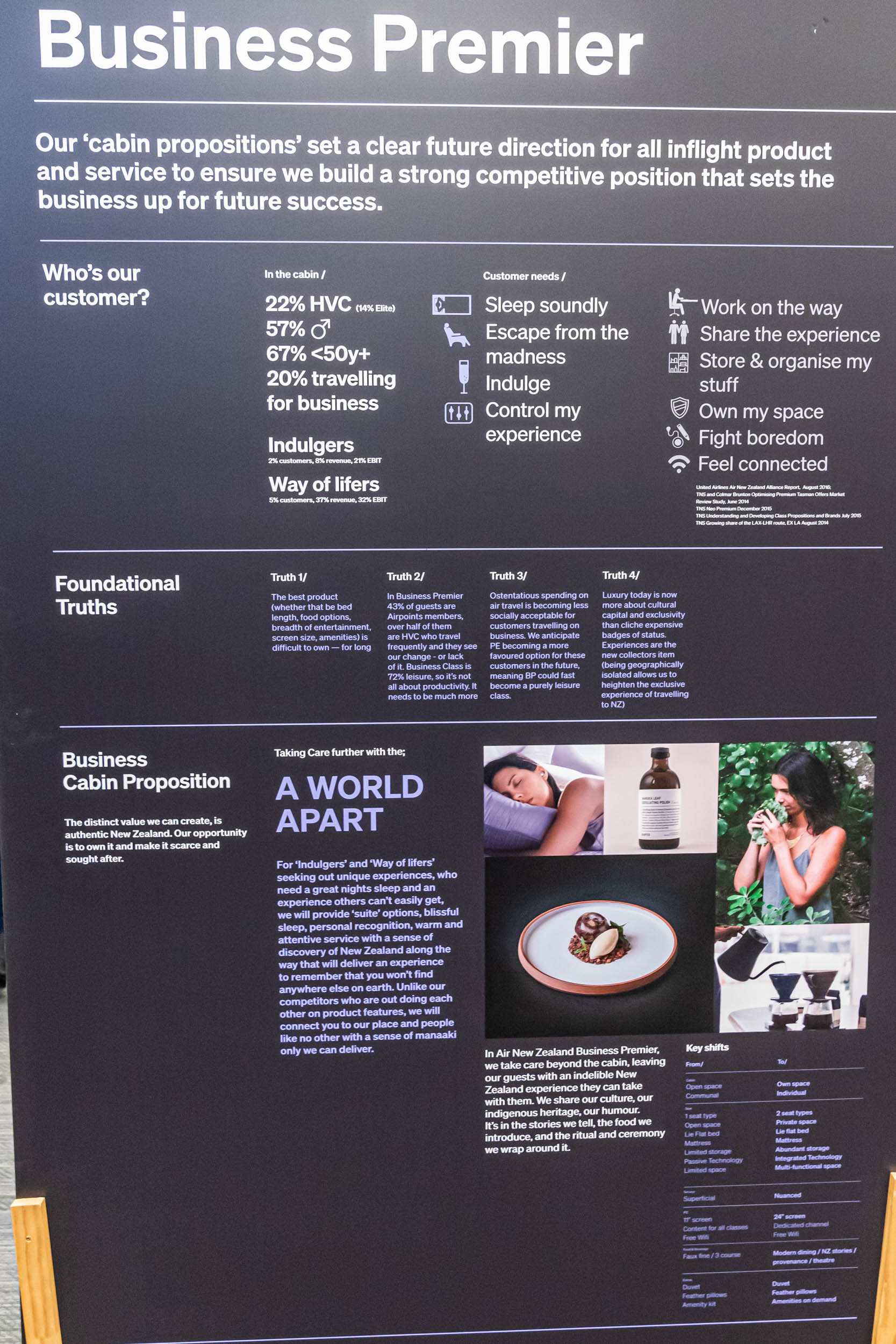
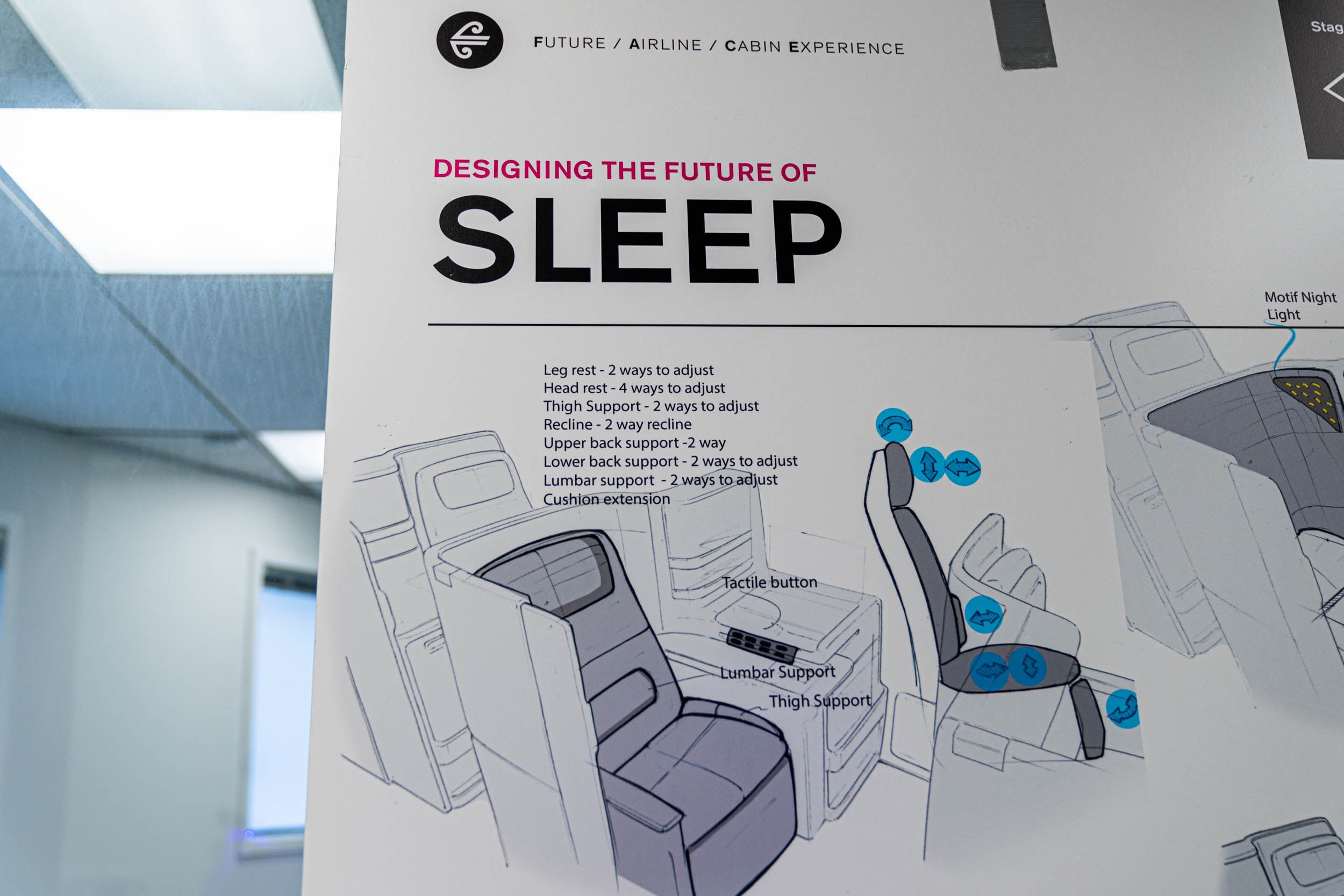
The office looks like what you might see at an architect’s firm or an advertising agency. It has an open-concept design with a few desks and tables as well as renderings, charts and sketches adorning the walls. Overall, there’s an informal, creative vibe.
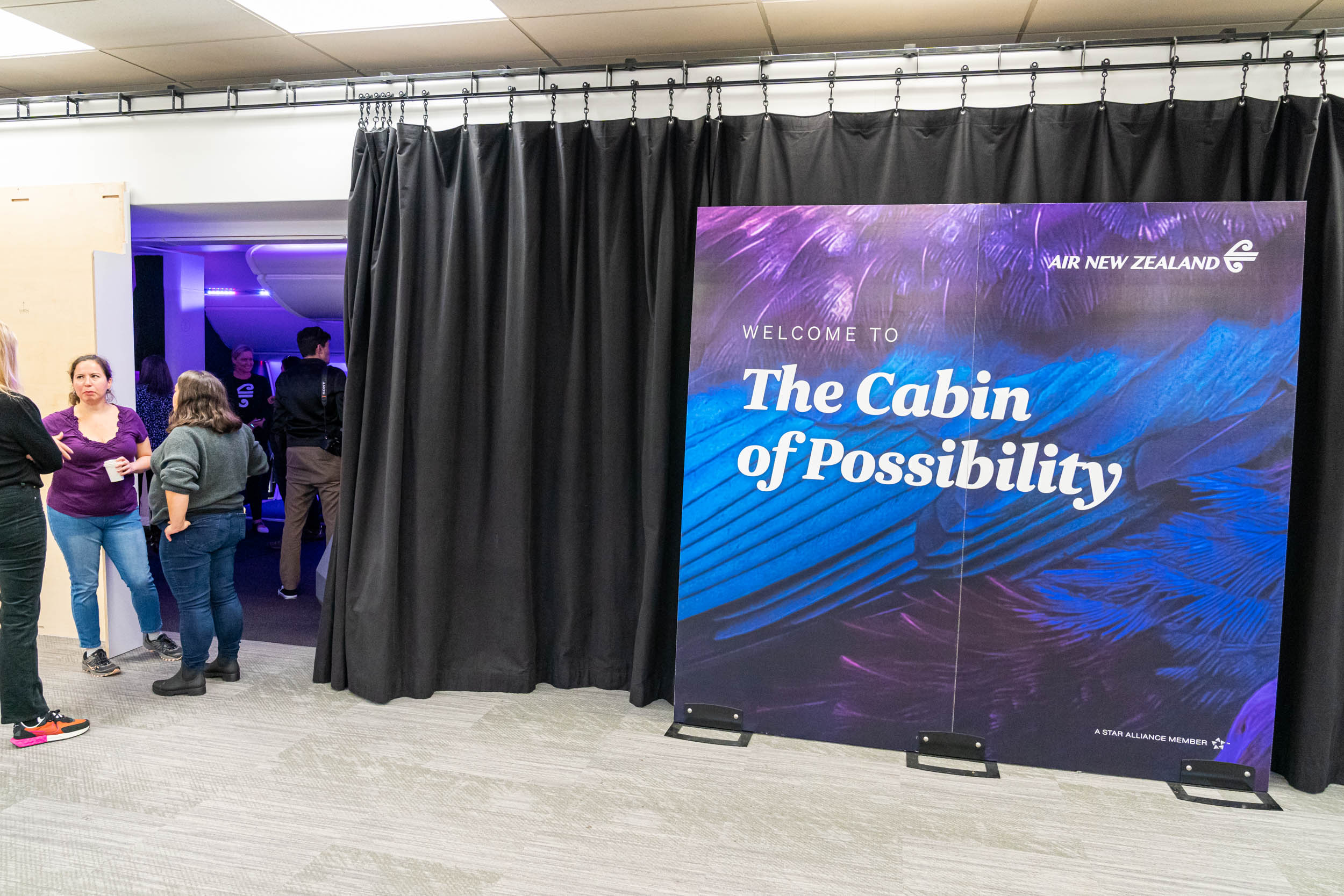
Most airlines have product teams that focus on cabin design and service offerings — everything from seat material to in-flight entertainment to the meal service flow.

However, Air New Zealand’s hangar is unique in its single-purpose design as well as its focus on customer experience — and that air of secrecy. This made touring the space all the more special.




